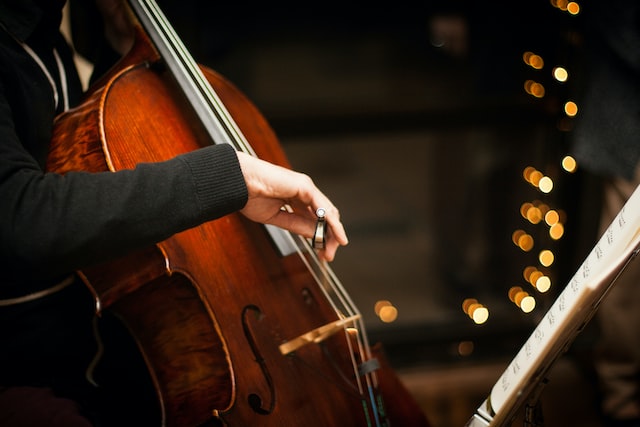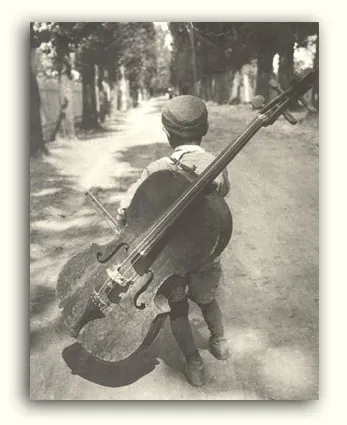What is the Cello instrument?
The Cello instrument is a four-stringed musical instrument, the second largest and lowest in the pitch of all Western string instruments. The strings of the Cello are designed to be bowed and occasionally plucked, with each of the strings tuned to fifths. The Cello is often used as a solo instrument, as well as in music ensembles like string quartets or orchestras. The unique sound of the Cello also makes appearances in rock and popular music.
A musician that plays the cello is referred to as a cellist or violoncellist. The name Cello was derived of the Italian word violoncello which translates to “little violone.” At that time, the violone or “big viol” took the role of the lowest-pitched in the viol family. In modern orchestras, the Cello instrument is the second largest string instrument behind the double bass. The name “violoncello” became popular by merging the terms “-one”, meaning large, as well as the diminutive “cello,” meaning little. Now, it is customary to refer to the instrument simply as, Cello.
History of Cello Instrument
The Cello instrument is a major part of the violin family. As a member of the violin family, the first cello-sized instruments emerged around the year 1500. The earliest known record of violins described three different sizes of the instrument, these sizes correspond approximately with the instruments we now know as violins, violas, and cellos. Around 1660, in Bologna, the invention of a string crafted from a thin gut core with fine wire wrapped around each line emerged, known as wire-wound strings. These new strings allowed a more precise bass sound than was previously possible.
By 1700, the Cello gained popularity in northern Europe, while in France the bass violin continued to be used for another two decades. During this time, the sizes, names, and tunings of the Cello instrument varied greatly in correlation to their time and geography. These instruments continued to develop, largely without any standardization, until around 1750.
The modern Cello instruments that are familiar today differ from those of the Baroque era in several ways. Modern versions of the cello now feature an endpin at the base of the cello to support the instrument and transmit the vibration of the low notes into the floor, as opposed to their Baroque counterparts that were braced entirely by the cellists' calves during play. Additionally, most modern strings have a core constructed of metal, as opposed to the gut strings used in the Baroque period. This allows the modern instrument to play louder, with more projection, and fewer overtones.

Types of Cello Musical Instrument
Orchestral
Today, Cello musical instruments are an essential piece to any symphony orchestra. The standard orchestra typically includes eight-to-twelve Cello players. In standard orchestral seating, the Cello section is typically located on stage left (audience right) opposite the violin section.
Solo
In the 20th century, the Cello repertoire grew exponentially due in part to virtuoso cellist Mstislav Rostropovich, who inspired, commissioned, and premiered many works during their musical career. Today, there are many solo concertos available to cellists and the collection continues to grow as more and more musicians are falling in love with the rich and deep sound of this timeless instrument.
Quartets and other ensembles
Traditionally, Cellos are a member of the string quartet, string quintets, sextet, or trios, as well as other mixed ensembles. Some pieces have been written for groups of two, three, four, or more cellos-called a “Cello choir.”
Jazz, World Music, Pop, and Rock
While the Cello is less commonly seen in popular music, many bands have featured Cellos in popular songs including the Beatles, Cher, the Beach Boys, and Pink Floyd. The Cello has also been featured in a variety of bluegrass and folk music with notable players. Musicians from across the world are finding new and experimental ways to include the smooth, deep voice of the Cello.
Cello Playing Technique
The Cello is played by a seated musician who places the instrument on the floor by the endpin. The left-hand works the strings on the fingerboard, stopping the vibrations along the neck to determine the pitch of the notes. Meanwhile, the right hand takes on the role of plucking, or bowing the notes to create sound. The thumb of the cellist’s left-hand rests on the back of the neck while the other fingers will remain curved around the strings of the cello with each knuckle slightly bent and the fingertips in contact with the strings. The pressure the fingers impose on the strings during play directly impact the instrument's vibrato, the wavering pitch of a note, used by the musician to add creative expression. The more room the string is allowed during play, the more vibrato may be expressed in each note.

Cello Mechanics
Cellos are commonly constructed from carbon fibre due to its strength and resistance to tuning fluctuations brought on by temperature and humidity. They are constructed of eight main parts including: neck, fingerboard, scroll, pegbox, strings, endpin, bridge, and bow.
Neck, fingerboard, scroll and pegbox
The neck of a cello is the curved length above the main body of the instrument. The neck leads to the pegbox and scroll that are typically carved out of a single piece of wood--traditionally maple. The fingerboard is then glued to the neck of the instrument and extends to the full length of the body and embraces the strings. The peg board houses the tapered tuning pegs for each string, ensuring the friction pegs remain in the desired tune. The scroll, found curling at the end of the neck, is an ornamental piece common on instruments of the violin family.
Strings
Historically, cello strings were first created out of catgut which, contrary to the name, was actually created from sheep or goat intestines that were dried and stretched. Today, strings are typically metallic materials like aluminium, chromium, or titanium. Each cello has a set of four strings that need replaced periodically during the life of the instrument.
Endpin
This piece is found at the bottom of the cello and traditionally made of ebony or another hard wood. The strings of the cello attach to the pin by lacing the ends of the strings through holes in the pin. Because of this, the endpin may also be used for very fine tuning of the strings.

Notable Cello Players
Famous cellists can be found all over the world and in a variety of genres. Some of the most notable Cello players are:
Alisa Weilerstein
Charles Asch (View his course)
Don Larson (View his course)
Emanuel Feuermann
Jacqueline du Pre
Joginder Pal Sharma
Natalia Gutman
Mstislav Rostropovich
Mischa Maisky
Pablo Casals
Saskia Rao-de Haas
Yo Yo Ma










